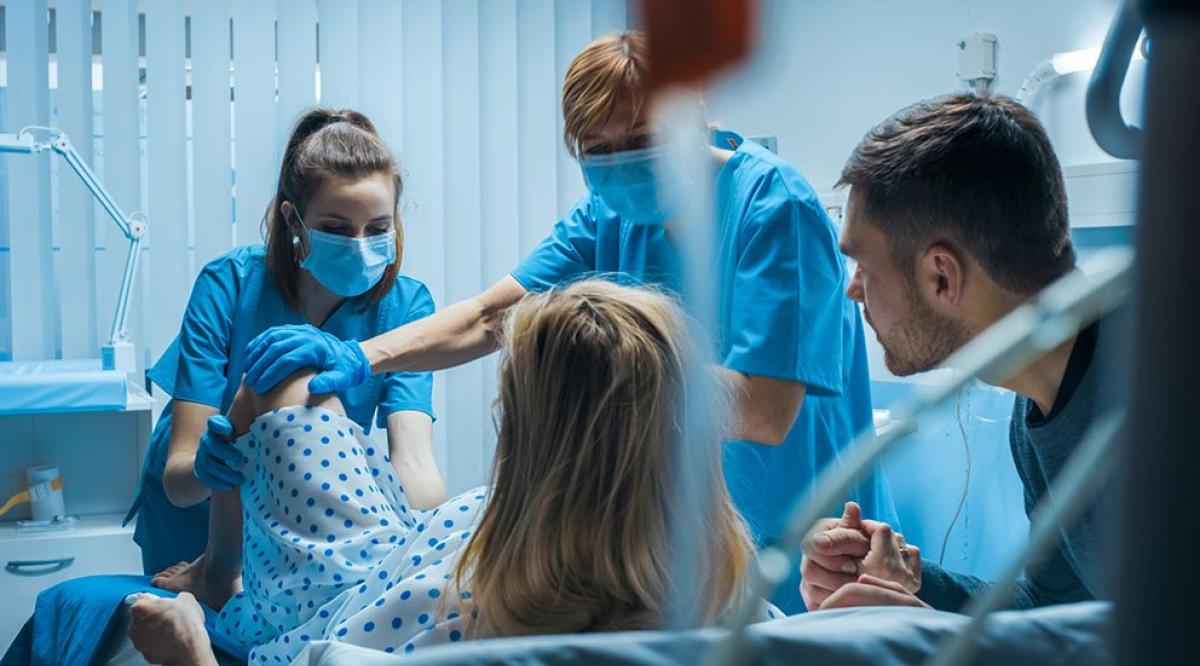Joshua Ellis, MD, had practiced saving someone on the brink of death hundreds of times when he was in medical school. Before bed, he’d study the resuscitation algorithms, practice the ability to be calm in the face of chaos, and give himself pep talks in the mirror.
Then one day, when he was an intern at Mayo Clinic in Red Wing, Minnesota, it happened: a patient coded.
Ellis, who was five minutes early to his shift, was thrown into the fray the moment he arrived. “They called for help. I still had my backpack on,” says Ellis, now a third-year emergency department resident at Mayo Clinic in Rochester, Minnesota.
The patient was a woman in her 40s, relatively healthy, who had come to the emergency department for abdominal pain. She was given a CT scan to investigate, and she very likely had a rare allergic reaction to the contrast dye that caused hypoxic arrest.
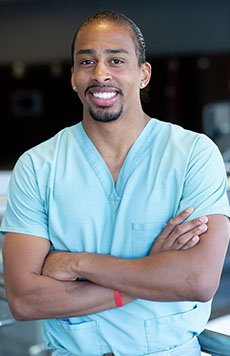
Ellis announced the patient didn’t have a pulse and began chest compressions. Medical students are sometimes taught to do this to the beat of the Bee Gees’ “Stayin’ Alive” in their heads. But Ellis had practiced it so many times, it came naturally.
“I didn’t feel the imposter syndrome that I thought I would,” Ellis says. “It was more just surreal, just doing what needed to be done for the patient.”
Personnel cascaded into the room, and all Ellis could hear was the bustle of chest compressions and the sound of beeping, along with his own voice yelling for a breathing bag. It felt like 20 seconds. In reality, it was nine minutes.
The patient had a return of spontaneous circulation. She came to, confused, mumbling, and reaching out to touch the doctors who had helped her. Ellis breathed a sigh of relief.
“Afterward I was in a state of shock. It was the scariest situation,” Ellis says. “I felt really vindicated. My confidence was secured.”
Though doctors often exude a confidence reflective of extensive experience, each one was once an unsure medical student or resident. Five of these fledgling doctors spoke to AAMCNews about their notable firsts — the uncertainty, the excitement, and what they learned.
When the diagnosis is unknown
Ana Flores, a fourth-year medical student at the University of Texas Health Science Center at Houston, still remembers the playful, wide-eyed baby she met in October 2017.
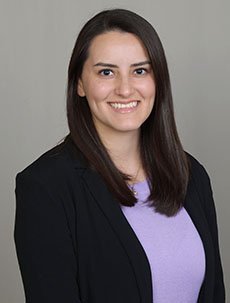
He was by many measures a typical three-month-old. He was always smiling, Flores remembers. But the baby couldn’t lift his head or put on weight, and he wasn’t really growing. He was the first patient in her pediatrics rotation at Children’s Memorial Hermann Hospital in Houston, Texas.
“We were going through this whole process of figuring out what was going on,” Flores says. “But we weren’t sure what his condition was.”
His parents were from Romania and they used a translator to communicate with medical personnel. But there was a fear in their eyes that transcended any language barrier.
Fast forward 10 months, and Flores was back in the pediatric unit for an active internship. The same smiling baby with the big eyes was still a patient there.
“He was still not gaining weight, and he hadn’t really grown,” Flores says. “He couldn’t really walk. It was pretty hard to see.”
Flores would go home at the end of the day feeling defeated. It was the first time she realized that there would be some patients she wouldn’t be able to diagnose.
“I think what I took away the most from it is a lot of times, you can’t know everything,” Flores says. “And there are times you can’t help the patients like you want to.”
The birth of a career
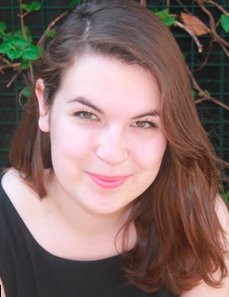
“There’s a shoulder, call peds!”
Monica Meeks, now a second-year student at Johns Hopkins University School of Medicine, was shadowing on the labor and delivery floor in March 2018. Despite having several family members who had given birth, she had never witnessed one before.
That was about to change.
But something was wrong. The baby’s shoulders were lodged in the mother’s pelvis — a condition called shoulder dystocia — and havoc broke out in the room.
“The nurses were running around, I was moving out of the way,” Meeks says. “With shoulder dystocia you risk having permanent paralysis to the baby’s arms.”
The mother was put on supplemental oxygen, and the obstetrician began maneuvering the baby to unstick its shoulders.
The complications were unexpected — the patient was an upper-middle class woman in her late 20s, pregnant with her first child, with no comorbidities. Doctors were expecting a smooth delivery.
That was one of the lessons Meeks took from this experience — you never know what kind of birth to expect, she says.
The doctor dislodged the baby’s shoulders, and the mother began pushing. Meeks helped hold her legs.
“I thought, this is a day this woman is going to remember forever, and she doesn’t even know who I am,” Meeks says.
Suddenly, she heard a strong cry come from the newborn. The father was beaming.
The mother and baby both made it out of the hospital without incident. As for Meeks, OB-GYN is among the top specialties she’s considering.
“I’ve never seen a look on anyone’s face the way the mom and dad looked,” Meeks says. “It was such a beautiful moment.”
The first cut
Jon Sole, currently a fourth-year student at Stanford University School of Medicine, had seen the inside of his cadaver many times. But it wasn’t until October 2017 during his surgery rotation when he saw the pulsating insides of a live human on an operating table.
“You see everything in books, but it’s two dimensional; there’s no life in it,” Sole says. “But in real life, you’re there, there’s blood, and it’s a much more visceral experience.”
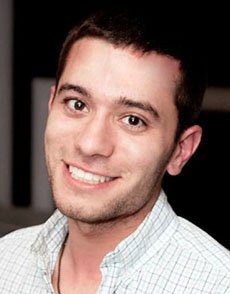
The circumstances of his first operating room (OR) patient were unusual. She was a 13-year-old girl who had a massive hairball in her stomach — otherwise known as a trichobezoar. She had a habit of pulling her hair out and eating it.
The hair ball had gotten so large that it eroded a hole into the patient’s stomach.
Sole remembers the frigid air of the OR, the incessant beeping from the machines, the smell of the patient’s organs. The bright lights made him feel like he was a performer on stage.
Sole stood by, suctioning bodily fluids, and getting a sense of the OR dynamic.
“The interplay between general surgeons, [gastroenterology] doctors, the psychiatry team, the nurses — watching that happen in real time was like watching an orchestra play a piece,” Sole says.
Sole will not be going into surgery, but he said the experience taught him how to interact with family members of those who are ill and allowed him to see up close the team work it takes to successfully run an OR.
“The process of surgery was fascinating,” he says, “an amazing tribute to medicine and the human body.”
Embracing death
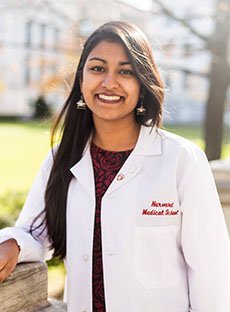
Shivangi Goel, now a second-year student at Harvard Medical School, was completing her surgery rotation in September 2018 when she had her first patient on palliative care. Most of her patients had difficult cancers — liver, gallbladder, pancreatic. But most of them were older.
Not this patient. She was in her late 30s and had two very young children.
She had endured the complicated Whipple procedure, but it wasn’t enough to fight the cancer slowly taking over her body. The medical team knew it was only a matter of time, and they tried to make her as comfortable as possible.
“We weren’t just trying to fix her problem, but we wanted to be there emotionally,” Goel says.
On a particularly tough day, the patient confided in Goel that she wished she had more time with her children.
“I wish I had my kids earlier in life,” she said to Goel. “Because you never know what’s going to happen.”
In her patient, Goel saw her own mother. A vibrant, happy woman who would have done anything for her children. Goel began to think about how awful it would have been to lose her own mother so young.
“Seeing the similarity to my own mother was heartbreaking,” Goel says. “It was harder than having older patients — it made it a lot more relatable.”
Goel learned to care for her patient without trying to save her life. She set up play toys for the children in the hospital room, so her patient could have some semblance of the life she wanted. The patient lived another six months.
“I wasn’t going to change the outcome for her. But every day she spent in the hospital, we gave her a little more time,” Goel says. “That’s something.”
